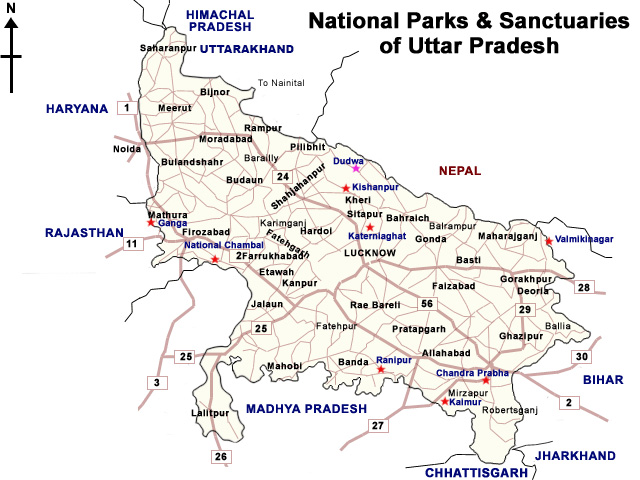Important Facts For Prelims
Pilibhit Tiger Reserve: Uttar Pradesh
- 14 Sep 2021
- 3 min read
Why in News
Recently, a herd of Elephants from Shuklaphanta National Park reached the Pilibhit Tiger Reserve (Uttar Pradesh) and damaged crops of farmers.
- The Shuklaphanta National Park is a protected area in the Terai of the Far-Western Region, Nepal.
Key Points
- About:
- It is located in Pilibhit district, Lakhimpur Kheri District and Bahraich District of Uttar Pradesh.
- It was designated as a Tiger Reserve in 2014 and was India’s 45th Tiger Reserve Project.
- In 2020, it bagged the International Award TX2 for doubling up the number of tigers in the past four years.
- It forms part of Terai Arc Landscape in the upper Gangetic Plain. The northern edge of the reserve lies along the Indo-Nepal border while the southern boundary is marked by the river Sharada and Khakra.
- Corridor Linkages:
- Pilibhit is an important habitat for tigers owing to its connection with several tiger habitats within the State and outside. They are used by tigers and other wild animals.
- The important linkages are:
- Flora and Fauna:
- It is home to a habitat for over 127 animals, 326 bird species and 2,100 flowering plants.
- Wild animals include tiger, swamp deer, bengal florican, leopard, etc.
- It has high sal forests, plantations and grasslands with several water bodies.
Terai Arc Landscape
- It is an 810 km stretch between the river Yamuna in the west and the river Bhagmati in the east.
- It is spread across the Indian states of Uttarakhand, Uttar Pradesh and Bihar, and the low lying hills of Nepal.
- It boasts of some of India’s most well-known Tiger Reserves and Protected Areas such as Corbett Tiger Reserve (Uttarakhand), Rajaji National Park (Uttarakhand), Dudhwa Tiger Reserve (Uttar Pradesh), Valmiki Tiger Reserve (Bihar).
- The forests are home to three flagship species, the Bengal tiger (Panthera tigris), the greater one horned rhino (Rhinoceros unicornis) and the Asian elephant (Elephas maximus).





